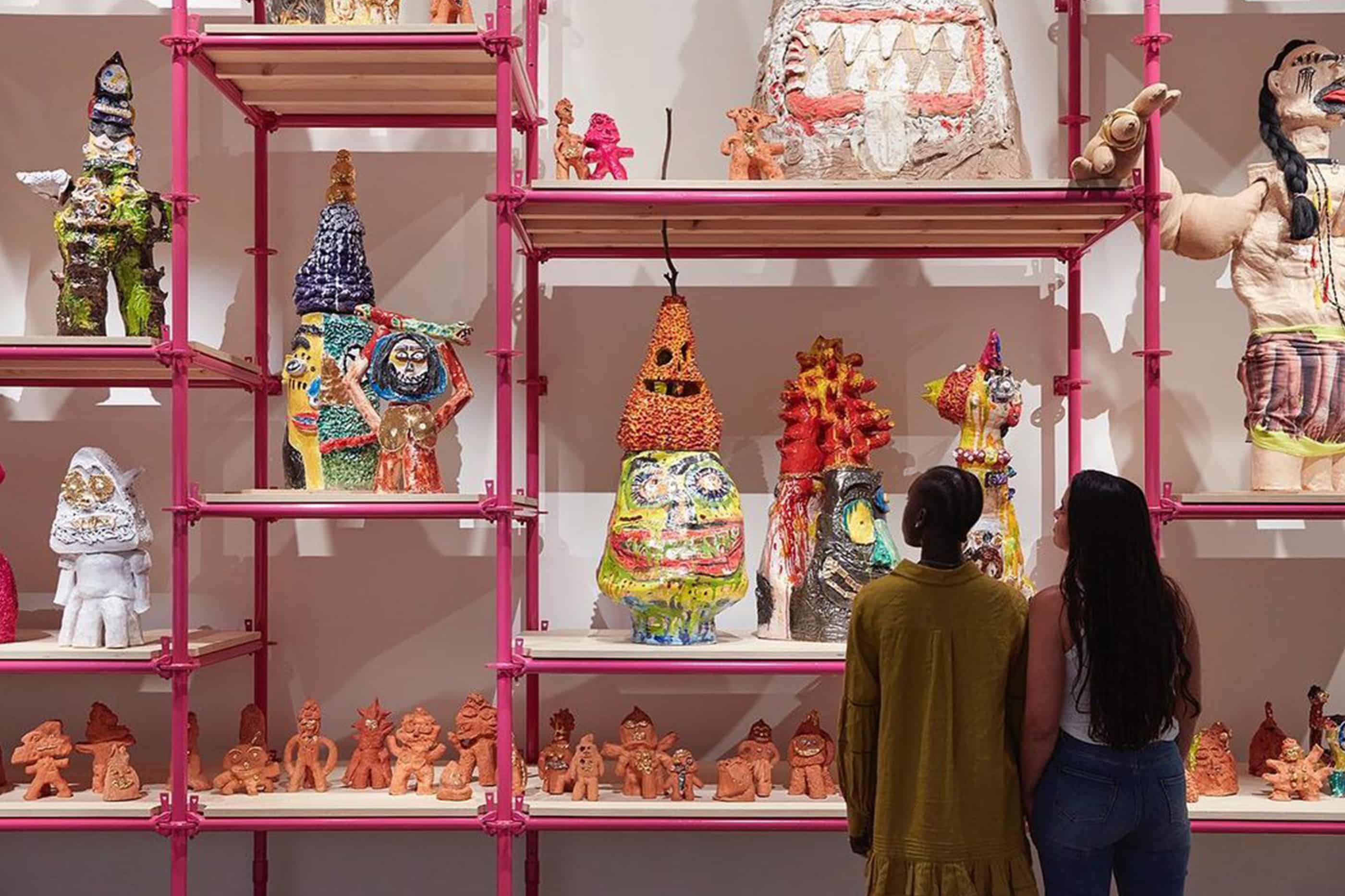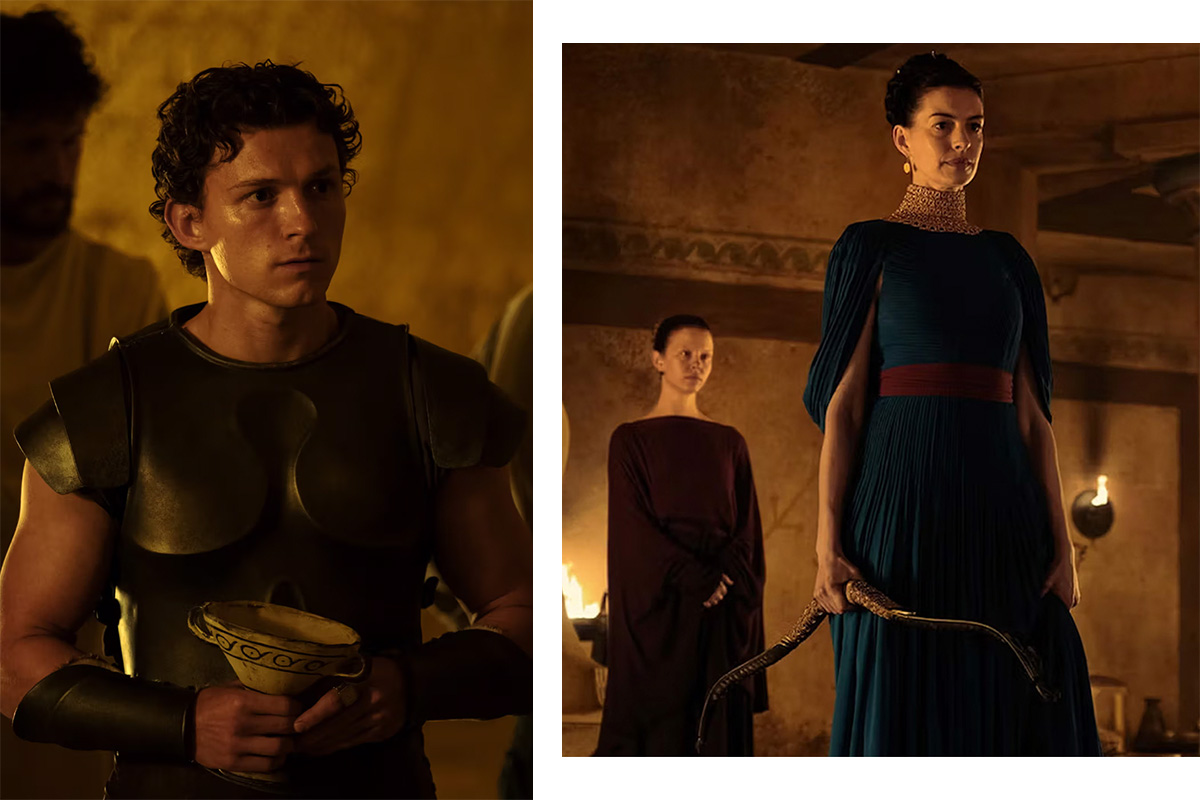
Sydney Modern is a week away from opening when I get Justin Paton on the phone. The head curator of international art at the Art Gallery of NSW is finally putting his feet up after a day of installing for the new wing's debut exhibition Dreamhome: Stories of Art and Shelter. "So why home?" I begin. "It's an idea that everyone has a stake in."
Even if you haven't stepped foot in the new AGNSW space, you'll have clocked its most viral moments on your feed. Divided into nine chapters that mirror the formation of a house, the first room features a cardboard canopy from Isabel and Alfredo Aquilizan made up entirely of miniature dream homes. Since April this year, the duo has invited school students and communities to come together and create these sculptures, which would inevitably become this immersive structure entitled Making it Home.
View this post on Instagram
"The work demystifies the idea of art that it is not an individual pursuit but a collective one," The Aquilizans tell me. "That all of us in one way or another have gone through similar journeys in life and we want to extend the idea of ownership of the work to everyone who has come and taken part, not only in the making, but also who experience the work on view."
It's a compelling sentiment. Not only that, it serves as a sort of mission statement for Sydney Modern more broadly. From the outset Justin Paton wanted there to be a sense that this was a new home for art in Australia, but also a space for "people from all walks of life to have their own space and time to encounter art".
In recent years, all of us have had to confront our understanding of home; whether that's a byproduct of lockdown, closed borders and the pandemic, spurred on by the housing crisis or the reality of climate change, or prompted by war and displacement. As Paton explains, home "carries such a huge freight of meaning".
"To talk about home is to describe your values, who you are, where you've come from, where you hope to be. And how you see yourself in relation to the larger world."
As a concept, it's been brewing in the curator's mind for a decade, ever since the 2011 Christchurch earthquake. As a Kiwi living in Australia, Paton recounts the peculiar experience of watching the city he grew up in, along with many of its suburbs, completely flattened and reduced to empty parkland. Under these circumstances, Paton began to question what is home? Is it concrete or something evanescent?
View this post on Instagram
In turn, there are artworks that contemplate what it is to lose a home, to be forcibly unsettled and what happens when home is not a place of safety. Photographs from Iranian artist Hoda Afshar's 2018 series Remain depict Behrooz Bouchani, Ari Sirwan and other men seeking asylum who were violently detained on Manus Island. Elsewhere, stands US artist Simone Leigh's sculpture Sentinel, an icon of the Black female form that both serves as a guardian, and the thing one stands to guard, when the outside world is unrelenting and unjust.
For some, like local artist Ramesh Mario Nithiyendran, the idea of home instability is not a new one. "I'm from a refugee family, I've been thinking about forced migration and other forms of displacement since I was a child."
View this post on Instagram
Nithiyendran's installation can be found as you near the end of Dreamhome: Stories of Art and Shelter. Bubblegum pink scaffolding hosts a series of clay avatars varying in scale in and colour. It's an energetic inclusion, and as Nithiyendran explains, "the home my work speaks of is at once imaginary, auto-biographical, idealistic and apocalyptic even. But the core principle to this home is multiplicity and plurality."
"The works have multiple heads, multiple genders emerge from various regions and aesthetic principles," he says. "It’s a utopian proposition that looks to the past to gesture to the future" and is achieved by unifying cross-cultural visual languages.
The greatest strength of Dreamhome: Stories of Art and Shelter is its success in communicating an abundance of perspectives on the subject of home. Much of this has to do with the curation of artists involved, a delicate balance between local and international voices who stand at unique intersections of difference. Among those mentioned, other figures you'll find within the exhibition include Tracey Moffatt, Louise Bourgeois, John Prince Siddon, Carrie Mae Weems, Michael Parekōwhai, Samara Golden, Karla Dickens and Igshaan Adams.
View this post on Instagram
By the time you reach the final room Dwelling Together, a space dreamt up by Choctaw Cherokee artist Jeffrey Gibson, you feel at once fuller and lighter. The exhibition has "a very strong body language," says Justin Paton. "You go from some things that are very small and intimate to other things that are really fast and physically overwhelming. There's a real sense of moving through different scales and materialities". It's for this reason that Gibson's three-person kissing bench becomes a welcome spot to sit and contemplate everything you've just absorbed.
"There's no greater privilege than getting to participate in other artists point of view," Paton tells me. But I can think of one: as Gibson's chair allows, it's the opportunity to do so in the company of others.



